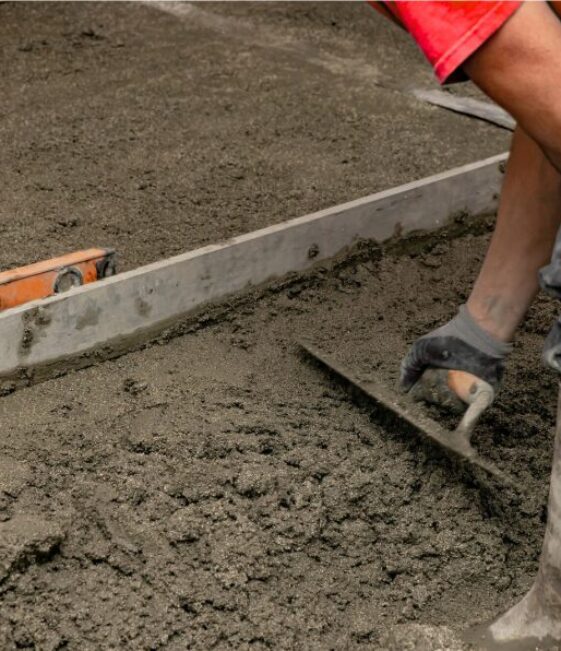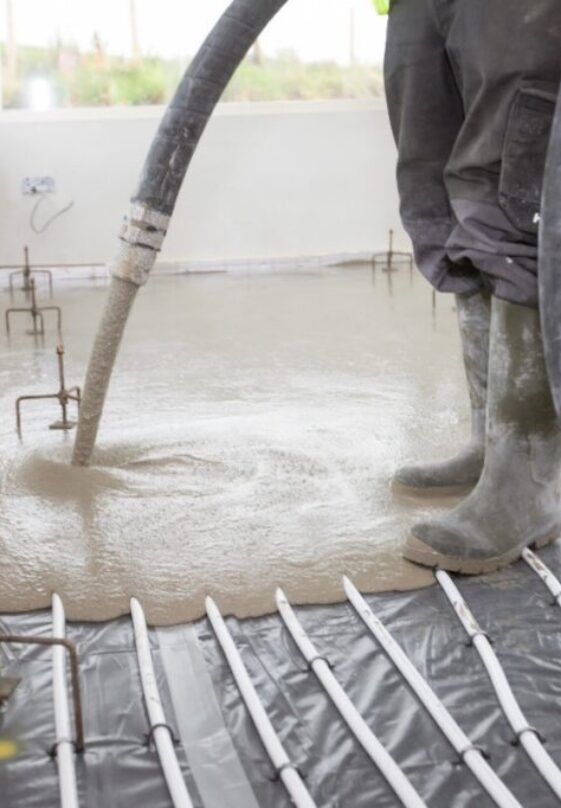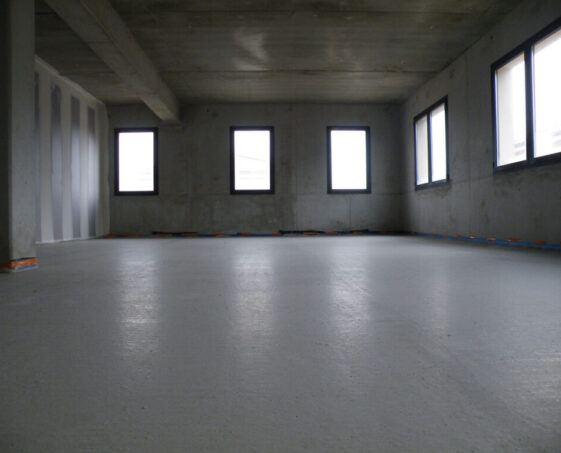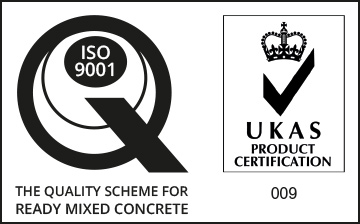Underfloor heating (UFH) is one of the most efficient, comfortable ways to heat a home.
Whether you’re a homeowner planning a renovation or a contractor preparing a project, one decision plays a major role in how well that heating performs: the choice of screed.


The screed sits directly over the underfloor heating pipework, helping transfer heat evenly across the floor while creating a smooth, stable surface for your final finish.
Hills Quarry Products supplies two high-quality screed solutions ideal for underfloor heating installations:
Both have advantages depending your project and budget. This guide will help you understand how each option works, and which one may be the best fit for your project and budget.
Why floor screed matters for underfloor heating…

Option 1: Sand cement floor screed
A traditional, proven solution for a wide range of builds
Key benefits
-
Consistent mix quality delivered directly from Hills’ batching plants
-
Retarder additive gives extended working time, useful for complex layouts
-
Fibre-reinforced option for improved crack resistance
-
Suitable for UFH, providing good heat transfer
-
Compatible with most floor coverings, including tiles, wood and carpets
What homeowners should know
This is the classic, dependable screed used in countless homes. It offers strong performance but usually requires a longer drying time before the final flooring can be installed.
What contractors should know
Sand cement screed is labour-intensive compared to liquid screeds. Achieving high flatness standards (SR1/SR2) relies on good installation practice, compaction and manual finishing.
Option 2: Cemfloor liquid screed
High-performance, fast installation — ideal for modern UFH systems
Hills Quarry Products also supply Cemfloor, a cement-based, free-flowing liquid screed known for excellent heat transfer, fast installation and low shrinkage.
Key benefits
-
Extremely fast installation — up to 1,000 m² per day
-
Self-levelling, providing a very smooth, even surface
-
Excellent thermal conductivity, making UFH systems more responsive
-
Low shrinkage, reducing the risk of cracking
-
Large bay sizes — up to 150 m² without joints (depending on the project)
-
Predictable drying behaviour, reducing programme delays
-
Suitable for bonded, unbonded and floating floors, including wet rooms
What homeowners should know:
Cemfloor can help your UFH system warm up more quickly and give you better overall heating performance. It also dries faster, so your project can keep moving without long pauses before laying flooring.
What contractors should know:
Cemfloor delivers excellent flatness with minimal manual finishing and reduces call-backs associated with shrinkage. It’s best installed by an experienced or approved liquid screed applicator.


Tips for a smooth underfloor heating screed installation:
1. Plan the floor build-up early: Consider insulation, pipe depth and expected screed thickness.
2. Ensure good site preparation: UFH pipes must be properly fixed; insulation boards must be stable and flat.
3. Follow the drying and commissioning process: Especially with UFH, gradually bringing the system online protects the screed.
4. Coordinate with other trades: Cemfloor’s faster drying can significantly compress project timelines.
5. Work with experienced installers: Liquid screeds, in particular, benefit from skilled application for best results.
Conclusion: A high-quality finish starts with the right screed
Whether you’re a contractor aiming for consistent performance or a homeowner looking for long-term comfort and efficiency, choosing the right screed is essential for underfloor heating success.
-
Choose sand cement screed if you want a traditional, robust, well-understood solution.
-
Choose Cemfloor liquid screed if you want high thermal performance, faster installation, and a smoother finish, especially on larger or time-critical projects.
Need expert advice? Talk to us today…
With 125 years in the industry, Hills Quarry Products can advise on the best option for your project. Talk to our experts today.











